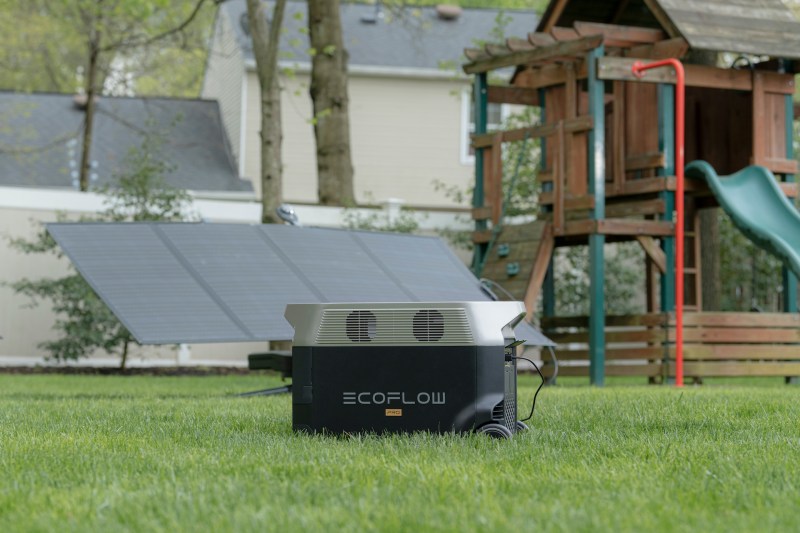

In a power outage, having one of the best portable power stations around will come in real handy. They tend to be expensive, but the peace of mind is worth it because during emergencies you can keep your most important gear running — whether that’s your appliances, a television or radio for news updates, or lights. They’re also the perfect energy source while you’re camping or exploring the great outdoors. You may think you already have all of the best camping gear, or best road trip gear, but if you don’t have a power source packed away, you’re not fully equipped.
There is a new portable power station on the block — or, at least, there will be soon. The EcoFlow DELTA Pro
The EcoFlow DELTA Pro portable home battery is a dual-purpose energy-delivery device. It’s a home battery, storing energy that’s generated through various means, but it’s also a portable power station to provide power to your home, RV, small living space, or whatever you need. You could set up lights all over your campsite, and connect them to this beast. A single unit has a base capacity of 3.6kWh of energy, but can be expanded to 25kWh with the additions of Smart Extra Batteries, Smart Generators, and a Smart Home Panel — enough to power an entire family’s needs for emergency use for up to a week. It can sustain air conditioners, refrigerators, washing machines, electronics, and much more. You can pair or sync up multiple units to increase the energy capacity if you need it.
The best part is that it employs unique FlowCharge multi-charge technology, so you can power it up using solar, Level 2 AC EV charging stations, wind turbines, and regular AC wall outlets. You can even charge it through a DC car charging port like you’d find inside your vehicle or RV. By outfitting the EcoFlow with additions — like Smart Batteries, Solar Panels, and more — it can be personalized, creating a more comprehensive system.
A single unit is available at a discount through Kickstarter right now for $600 off the retail price — which will be $3,599. That means you can get one for $2,999, with estimated delivery between September and October. If you’d like to learn more you can head on over to the Kickstarter page.
Why the EcoFlow DELTA Pro Is Perfect for Camping and Outdoors
While the DELTA Pro can absolutely power an entire home for up to a week for emergency use, what’s most exciting is the unit’s portability. A telescopic handle extends out from the side of the unit, making it easy to move around, especially with the large wheels. Since you can charge it up at EV stations, with standard AC outlets, and also DC outlets, there are a bevy of options to keep the DELTA Pro juiced up while you’re on the open road. The relatively compact form factor makes it easy to stow or bring along on trips, too!
You can also use renewable energy to charge the system. For example, with the right solar panels, and DELTA Pro’s wide voltage range — from 11 to 150 volts — charging time takes anywhere from 4 to 8 hours. That’s a quick rest stop!



